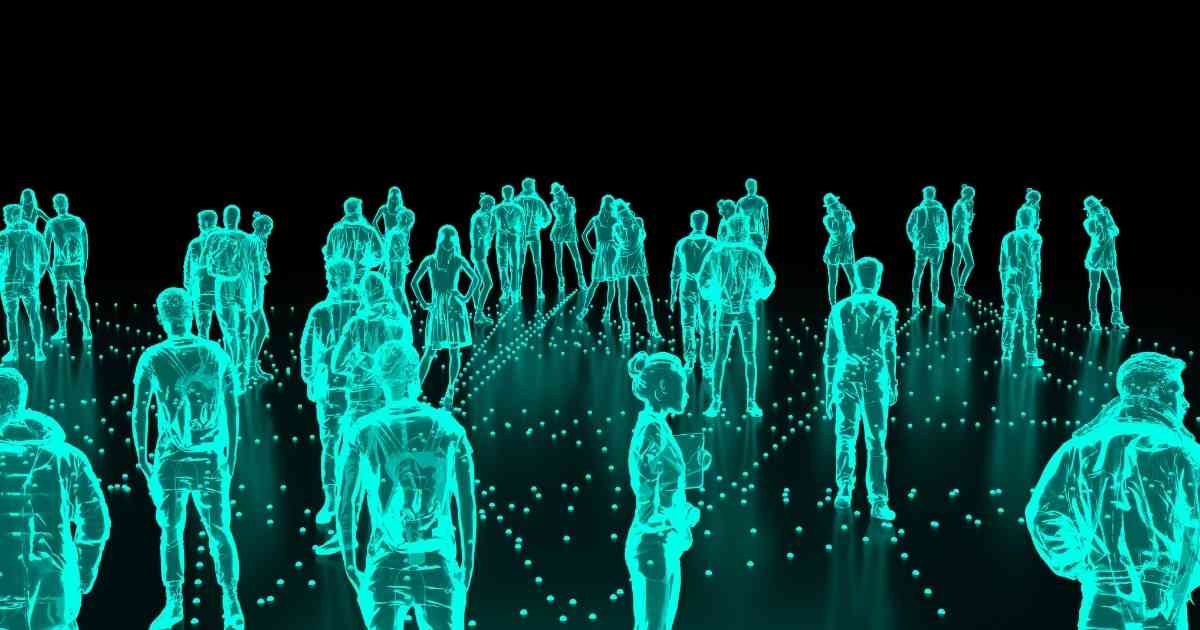Some of the links in this post/website are affiliate links. When you click and purchase the item or service, I may receive an affiliate commission at no extra cost to you. Whenever possible you will get a discount by using our link. You may not get the same discount when going directly to the product or service by any other means
Computer vision is a field of artificial intelligence (AI) that deals with the specialized tasks of extracting information from digital images and video data. This can be done in a number of ways, including identifying objects in an image, recognizing facial features, and detecting movement.
In recent years, computer vision has become increasingly important due to the growth of image-based social media platforms. In this blog post, we will discuss what computer vision is, how it works, and some applications of it. We will also explore the future of computer vision and how it will impact our lives.
What is Computer Vision in Artificial Intelligence?

Computer vision is a branch of AI that deals with how computers can interpret and understand digital images. This involves analyzing and understanding the content of an image, which can be either static or moving, to extract meaning from it.
There are two main types of computer vision: supervised and unsupervised. Supervised learning is where the computer is given a set of training data, which includes both images and labels, to learn from. Unsupervised learning is where the computer is only given images to work with and must figure out how to interpret them on its own.
Computer vision is a relatively new field and is constantly evolving. New algorithms are being developed all the time to improve the accuracy and efficiency of image interpretation. As computers become more powerful, it is likely that computer vision will play a bigger role in a variety of fields.
Some stereo-vision tasks, such as identifying objects in natural scenes, are relatively easy for human vision but difficult for computers. Other challenging task groups are easy for computers but difficult for humans, such as facial recognition. Computer vision is a fascinating and rapidly-growing field of artificial intelligence with many potential applications.
Applications of Computer Vision in Artificial Intelligence
There are a number of ways computer vision can be employed in artificial intelligence. Some common applications include:
Object recognition
This is the ability of a computer to identify and classify different objects in an image. This could be something as simple as identifying a specific type of animal or plant. Or, it could be more complex, like distinguishing between different faces.
Image processing
This involves extracting useful information from an image, like identifying features or patterns. This could be used for things like facial recognition or finding objects in a cluttered scene.
Scene understanding
This is the ability to make sense of an entire single image, not just individual objects within it. This could be used to identify the layout of a room or the relationships between different objects in an image.
Motion estimation
This is the ability to track objects as they move through an image. This can be useful for things like video stabilization or object tracking. It can also be used to estimate the speed and direction of moving objects.
Image stitching
This is when multiple images are stitched together to create a single, larger image. This could be used to create a panoramic view or to stitch together images from different visual perception cameras. Together, they create a more complete view of a scene.
Facial recognition
Facial recognition is the process of identifying specific faces in an image. It can be done by looking for distinct facial features, such as the eyes, nose, and mouth. This can be used for things like security applications or social media tagging.
Object classification
This is the ability to classify objects into different categories like animals, plants, autonomous vehicles, etc. This could be used to automatically sort images into different albums or to find similar objects in a scene.
Action recognition
This is the ability to identify and classify different actions like walking, running, or jumping. This could be used for things like video surveillance, consumer video systems, or human-computer interaction.
Biometrics

This is the process of using physical or behavioral characteristics to identify individuals. This could be used for things like security applications or identifying people in a crowd.
These are just some of the ways computer vision can be used with artificial intelligence techniques. As the technology continues to develop, there will likely be many more applications for it.
What is the Future of Computer Vision?
The future of computer vision in artificial intelligence is very exciting. There are many new and innovative ways that computer vision can be used to improve the lives of people and make tasks easier. Here are some examples of how computer vision in artificial intelligence can be used in the future:
- To create better and more realistic virtual reality experiences.
- To help robots interact more effectively with their surroundings.
- To create more accurate and detailed maps of the world.
- To improve the accuracy of weather forecasts.
- To automatically detect and identify objects.
- To automatically track and follow moving objects.
- To improve the efficiency of search engines.
- To create better and more realistic computer-generated images.
- To detect and prevent crime.
The possibilities are endless and the future of computer vision in AI is very exciting. We can only imagine what new and innovative uses for computer vision will be developed in the years to come. Exciting times are ahead!
FAQs
What is computer vision?
Computer vision is a process of training computers to interpret and understand digital images. This can be done through the use of special algorithms that analyze pixels and recognize patterns. Once these vision algorithm models are in place, they can be used to automatically identify objects, faces, or even emotions in images.
What are the benefits of using computer vision in artificial intelligence?
There are many potential benefits to using computer vision in artificial intelligence. Perhaps the most obvious benefit is that it can help computers to better understand and interpret digital images.
This, in turn, could lead to more accurate and efficient results from image-based search engines and other applications. Computer vision-based artificial intelligence systems may be able to identify objects or people in images, even when they are partially hidden or obstructed.
What challenges must be overcome to successfully implement computer vision in artificial intelligence?
While there are many potential benefits to using computer vision in artificial intelligence, there are also some challenges that must be overcome. One challenge is that computers need a large amount of training data in order to learn to accurately interpret images.
Another challenge is that computer vision algorithms can be computationally intensive, which can make them impractical for real-time applications. Computer vision systems can also be fooled by changes in lighting or other factors that cause images to appear different than they actually are.
Which sectors make use of computer vision?
Here are some computer vision applications across industries:
Security: Computer vision has many security applications. For example, it can be used to monitor an area for intruders or to detect suspicious activity.
Automotive: Computer vision is used often in automobiles. For example, it can be used for driver assistance, such as lane-keeping or automatic braking. It is also crucial to autonomous driving. Algorithms can aid in obstacle detection and navigation.
Medical: Computer vision can be used in medicine. It can assist in diagnoses such as cancer detection. It can also be used for things like robot-assisted surgery.
How is computer vision different from traditional image processing?
Computer vision is often described as a subset of image processing. However, there are some important differences between the two fields. Image processing generally refers to any type of processing that can be applied to digital images. This includes tasks such as resizing, compression, and format conversion.
Computer vision, on the other hand, focuses on giving computers the ability to understand and interpret digital images. This generally involves the use of special algorithms that can identify patterns in a digital image.
What are the limitations of computer vision?
Computer vision is limited by the same factors that limit traditional image processing. This includes the need for large amounts of training data and the computational intensity of some algorithms.
Additionally, computer vision systems can sometimes be fooled by changes in lighting or other factors that alter the appearance of images.
What is the most promising application of computer vision?
This is a difficult question to answer as there are many potential applications for computer vision. One promising application is in medical diagnosing.
Computer vision-based systems could be more accurate and efficient than traditional methods. They may also be able to identify diseases at an earlier stage, which could improve patient outcomes.
What is the most challenging application of computer vision?
The most challenging common application of computer vision is likely to be autonomous driving. This is because the system must be able to accurately interpret a wide range of data to make the safest decisions.
Additionally, the artificial system must be able to operate in real-time. That could be difficult due to the computational intensity of some computer vision algorithms.
Conclusion
The future of computer vision is very exciting. As we conduct more research and collect more data, computer vision systems only stand to become more accurate and efficient.
With the continued development of artificial intelligence, the potential applications of computer vision are endless. It is likely that we will see more and more use of computer vision in our everyday lives.



